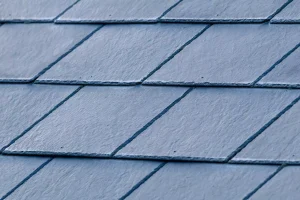
Your actions and consumption patterns have an effect on your carbon footprint. From cutting back on driving to switching to energy-saving light bulbs, every little step you take counts towards decreasing emissions.
One way to lower your carbon footprint is to hire an ENERGY STAR contractor for a comprehensive home energy assessment, providing free or low-cost energy assessments for homes in your area. A thorough audit can identify areas in which energy is being wasted within your house.
1. Insulate Your Home
Insulation of your home is one of the key components in reducing carbon emissions. By keeping temperatures consistent across your space, insulation helps ensure heating and cooling systems don’t need to work as hard.
Professional energy audits can help determine if your home is properly insulated. Energy auditors will inspect all areas, such as attic, walls and any potential air leaks or need for additional insulation.
Insulation upgrades can have a dramatic impact on energy costs. Your local utility company may offer sales tax holidays or rebates for products certified as ENERGY STAR-compatible.
2. Switch to Energy-Efficient Appliances
Energy Star products can save both money and energy costs for households. Not only can these appliances reduce greenhouse emissions and conserve water usage, they may also make life simpler for families who pay a significant portion of their income towards paying energy bills.
Use reusable utensils and switch to an energy provider using renewable or solar power – this alternative source of power is more eco-friendly than fossil fuels!
3. Install Energy-Efficient Lighting
Energy efficient lighting uses less electricity, saving both money and carbon footprint. LED bulbs that have earned the ENERGY STAR label are ideal. Furthermore, their durability means a jostle or bump won’t leave you in darkness!
Other energy-saving tips include washing clothes in either cold or warm water and taking shorter showers, using electric vehicles or carpooling when possible, choosing electric cars when possible and considering local vacation destinations over those that require jet fuel for travel.
4. Install Energy-Efficient Windows
Replacing old windows and doors with energy-saving ENERGY STAR-rated models can save energy. The new windows allow sunlight into your home to help warm it, while being less likely to leak air out, which helps lower costs throughout the year. Furthermore, many states offer tax credits for homeowners who install ENERGY STAR windows.
The ENERGY STAR certification confirms that your new window meets certain criteria, including having a low U-factor and gas filling to reduce heat loss. When combined with weather stripping and caulking around windows, doors, skylights, skylights recessed lights electrical outlets dryer vents attic hatches – your new windows will help make your home more energy-efficient while simultaneously lowering carbon footprint.
5. Install Energy-Efficient Doors
Your doors and windows play an essential role in minimizing energy loss in your home, but there are easy ways you can enhance their performance. Installing energy-efficient doors may reduce how much heat escapes.
Your door’s energy efficiency rating, known as its U-factor and R-value rating, depends on its material, core, and glass options – these ratings allow you to gauge its ability to hold in heat.
Reduce heating and cooling costs significantly with just a few steps! An InterNACHI home energy assessment can identify areas in which savings could be maximized.
6. Install Energy-Efficient Doors
Window World’s energy efficient doors can help reduce heating and cooling costs by providing better insulation against cold winter air or summer sun entering the home.
Electricity used by appliances like laundry machines, dishwashers and microwave ovens can quickly add up. To reduce electricity use while saving money on bills use appliances with the ENERGY STAR label; turning off equipment when not in use using a power strip may save up to 1kWh monthly!
Installing energy-efficient windows and doors is not only guaranteed to lower utility bills but may even qualify homeowners for tax credits as an incentive for improvements that reduce carbon footprints and fossil fuel usage in their home.
7. Install Energy-Efficient Insulation
Home insulation can be one of the best ways to reduce your carbon footprint. Insulation helps trap heat in winter and cool air in summer, significantly cutting energy use to keep your house comfortable.
Upgrade or adding home insulation can be relatively affordable and usually pays for itself within one year. Insulation should especially be placed in your attic where heat loss occurs most rapidly.
Make every effort to invest in energy-efficient appliances and lighting, and look out for those featuring the ENERGY STAR label when making purchases. Furthermore, consider switching your electricity provider over to one using renewable sources; these providers tend to leave less of an environmental footprint than companies using fossil fuels for power.




